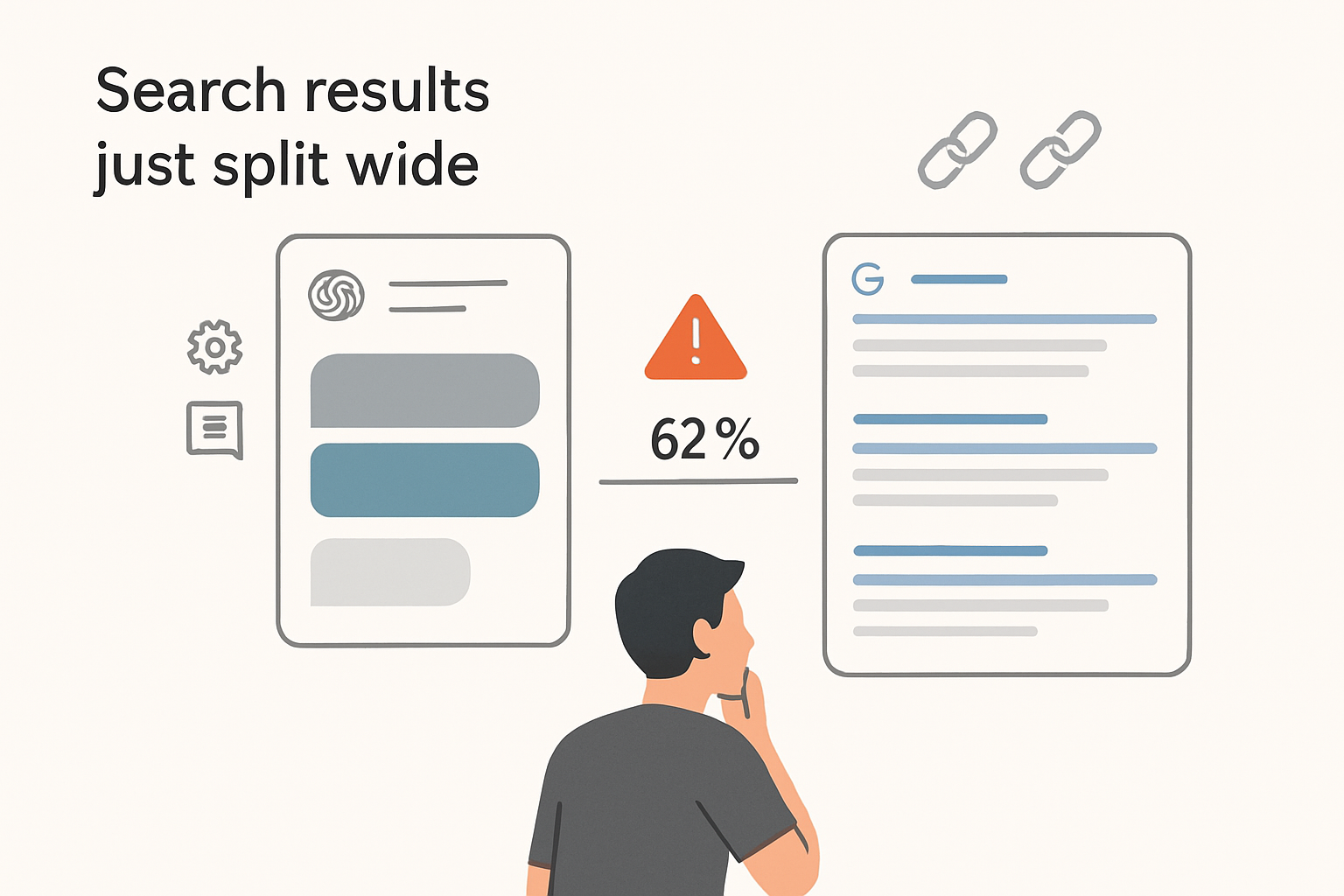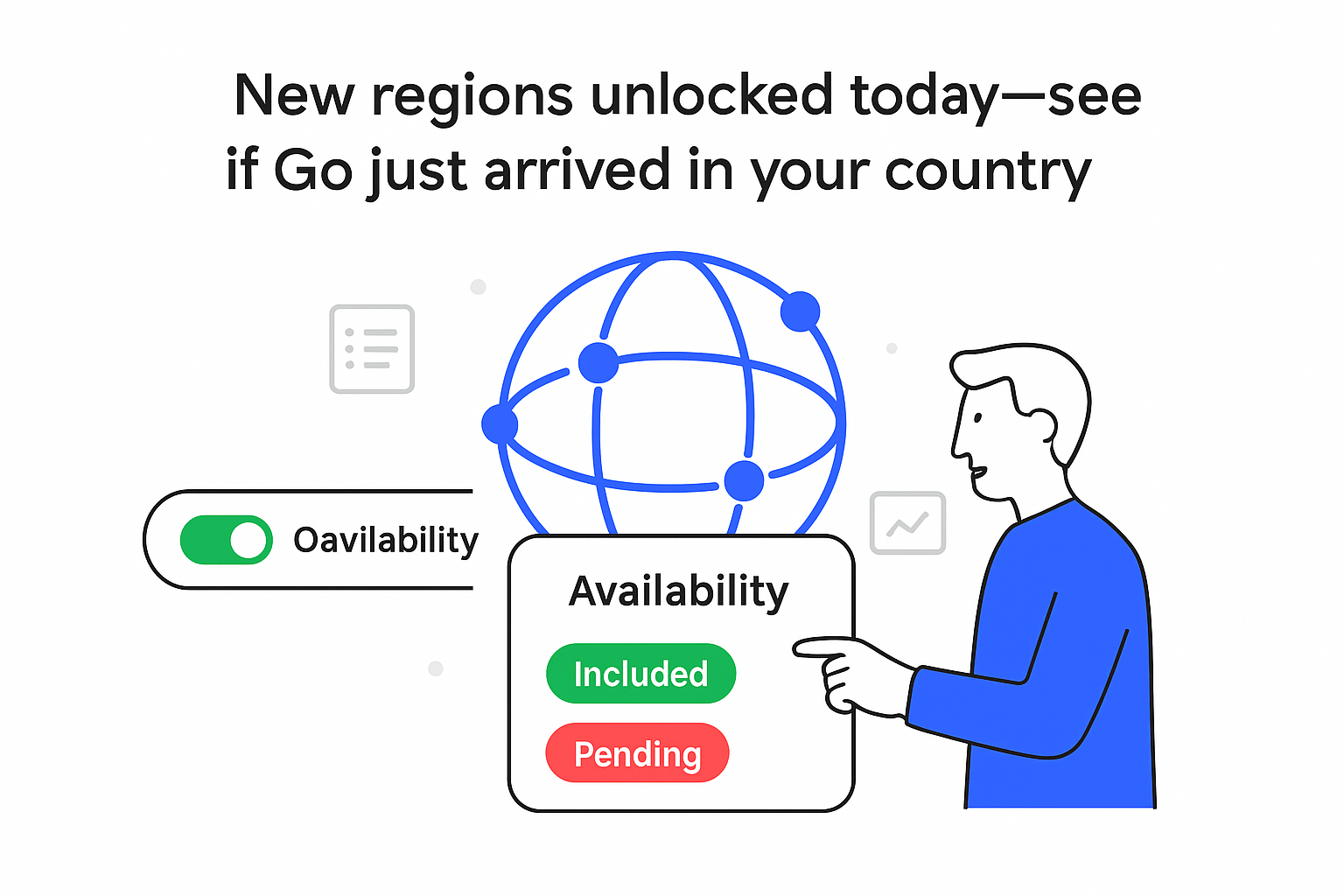ChatGPT and Google AI Overviews interpret the same task-oriented queries very differently, according to a 2024 study by BrightEdge. Across 250 commercially relevant searches, the two systems diverged on first-screen answers 39-62% of the time, with ChatGPT favoring apps and calculators and Google continuing to surface explanatory pages.
Divergent Intent Handling
BrightEdge compared ChatGPT-4o with Google AI Overviews in healthcare, B2B technology, education and finance. For action verbs such as "find a doctor" or "learn Python," ChatGPT usually returned proprietary tools – for example Zocdoc or Udemy – while Google supplied editorials and community threads like Mayo Clinic or GitHub. The models converged on fact-based comparisons such as "AWS vs Azure" but split sharply once the user intent turned transactional. Overall divergence ranged from 39% to 62%, indicating that each platform needs its own optimisation strategy.
Executive Snapshot
- 62% of healthcare task queries deliver different answer types in ChatGPT versus Google AI Overviews.
- Divergence: 47% in B2B technology, 45% in education, 39% in finance.
- ChatGPT surfaces named tools in 78% of action prompts; Google supplies informational URLs in 81% of the same prompts.
- For symptom checks and basic comparisons the two systems still cite the same authoritative sources in at least 80% of cases.
Bottom line: brands that own a usable tool or API enjoy more visibility in ChatGPT, while well-structured explainers remain the currency of Google AI Overviews.
Methodology
The data come from the BrightEdge research report Brand Visibility: ChatGPT and Google AI Approaches by Industry conducted in March-April 2024. A proprietary crawler captured first-screen responses for 250 English-language queries (about 60 per vertical) and logged entities, outbound links and brand logos.
- Query set skewed toward United States mid-funnel phrases; personalised or location-specific answers were not measured.
- Google AI Overviews early-May 2024 build and ChatGPT-4o web version were evaluated.
- Exact prompt wording and confidence intervals were not disclosed.
- Algorithm changes after April 2024 are not reflected.
Vertical Findings
Healthcare – 62% divergence
- Symptom checks: both quote CDC and Mayo Clinic (85% overlap).
- Provider discovery: ChatGPT lists Zocdoc and Healthgrades; Google shows hospital directories and insurer networks.
B2B Technology – 47% divergence
- Vendor comparisons: agreement on AWS, Azure and GCP.
- Deployment prompts: ChatGPT recommends Kubernetes CLI and Terraform; Google surfaces Stack Overflow threads and vendor docs.
Education – 45% divergence
- Course platform comparisons: overlap on Coursera, edX and LinkedIn Learning.
- Skill acquisition: ChatGPT suggests Udemy and Codecademy; Google highlights GitHub repositories and Medium tutorials.
Finance – 39% divergence
- Card or brokerage comparisons: near-identical coverage.
- Budgeting and retirement tools: ChatGPT promotes Quicken and NerdWallet calculators; Google links Investopedia explainers and .gov resources.
Across all four sectors, ChatGPT includes a software or tool link in 78% of task prompts versus 22% for Google. In contrast, Google provides paragraph-level definitions in 91% of cases versus 54% for ChatGPT.
Implications for Content Strategy
Likely Actions
- Develop or partner on calculators, checklists or micro-SaaS if you want prominence inside ChatGPT answers. The model interprets "how to" as a request for tooling.
- Maintain long-form reference content with structured data for Google AI Overviews, which still rewards authoritative prose and citations.
Tentative Ideas
- Pages that bundle an explainer with an embedded tool may earn visibility in both channels, but testing is required.
- Schema types such as "SoftwareApplication" and "FAQ" could help, although BrightEdge did not examine markup variations.
Speculative Outlook
Google is experimenting with AI-assisted actions, so the present divergence could narrow. Monitor monthly and adjust content inventories accordingly.
Limitations and Gaps
- Consumer retail and travel were outside the scope. Divergence could look different in product-heavy categories.
- Mobile performance was not isolated. Earlier BrightEdge data show 90% of AI search traffic remains on desktop.
- The study did not account for future ChatGPT plugin integrations that might alter the current tool bias.
Data Appendix
| Vertical | Queries Sampled | Divergence (Action Prompts) | Notable Tool Bias in ChatGPT |
|---|---|---|---|
| Healthcare | 60 | 62% | Zocdoc, WebMD Symptom Checker |
| B2B Technology | 64 | 47% | Kubernetes CLI, AWS CLI |
| Education | 62 | 45% | Udemy, Codecademy |
| Finance | 64 | 39% | NerdWallet, Quicken |
Sources: [S1] BrightEdge, "Brand Visibility: ChatGPT and Google AI Approaches by Industry," April 2024. [S2] BrightEdge, "AI Desktop/Mobile Divide," January 2024.







.svg)